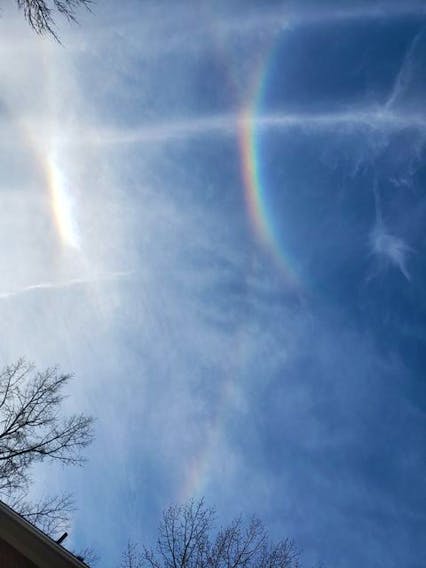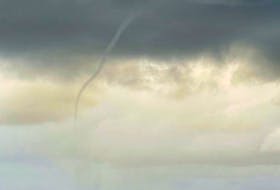When Karen Lindsay LeBlanc showed these pictures to her aunt, she encouraged her to send them to me.
The photos were taken in Winnipeg, Man., but Karen is a self-proclaimed East Coaster; all of her family is in New Brunswick and Nova Scotia. Her maternal grandfather was a meteorologist; her mom said she wishes Grampy was still around to give us answers.
Well, I'll do my best to explain the stunning web of haloes that filled the sky over Winnipeg, Karen.
We know that these halos and arcs appear when sunlight travels through ice crystals. Which optical phenomenon occurs depends on how high the sun is above the horizon, what types of ice crystals are present in the cirrus clouds, and how the crystals are oriented relative to the sun.
A singular common halo, or ring around the sun, is a 22-degree halos. It forms when the sunlight is refracted through millions of randomly-oriented hexagonal ice crystals in the atmosphere.
Scientifically, halos are called "22-Degree Halos" because the two refractions bend the light by 22 degrees from its original direction.

Sometimes, these ice crystals are not hexagonal but shaped more like pyramids. Pyramidal crystals have unique end faces that look like tiny, six-sided pyramids. In contrast to ordinary prism crystals, where the angles between faces are either 60 or 90 degrees, the angles between pyramidal crystal faces can also be 28, 52.4, 56, 62, 63.8, and 80.2 degrees. Each inclination forms a separate circular halo.
Karen mentioned that she spotted six different halos, only one of which was a sundog. I was not surprised. If you ever see sundogs, look high above the sun. The same type of ice crystals that causes them are responsible for the CZA (circumzenithal arc) - one of the brightest and most colourful members of the halo family. Its colours range from violet on top to red on the bottom.
If you're hunting for a CZA, don't go out at lunchtime. The sight only occurs when the sun is less than 32.3 degrees high and is at its best when the sun is about 22 degrees high. I’ve heard people refer to it as an upside-down rainbow but this arc isn't a rainbow in the traditional sense because it’s a result of light passing through ice instead of rain.
It must have been quite a sight. Karen, perhaps this special display of intricate halos over Winnipeg was a heartfelt nod from Grampy.
- Want more weather information? Visit your weather page.
- Have a weather question, photo or drawing to share with Cindy Day? Email [email protected]
Cindy Day is the chief meteorologist for SaltWire Network









